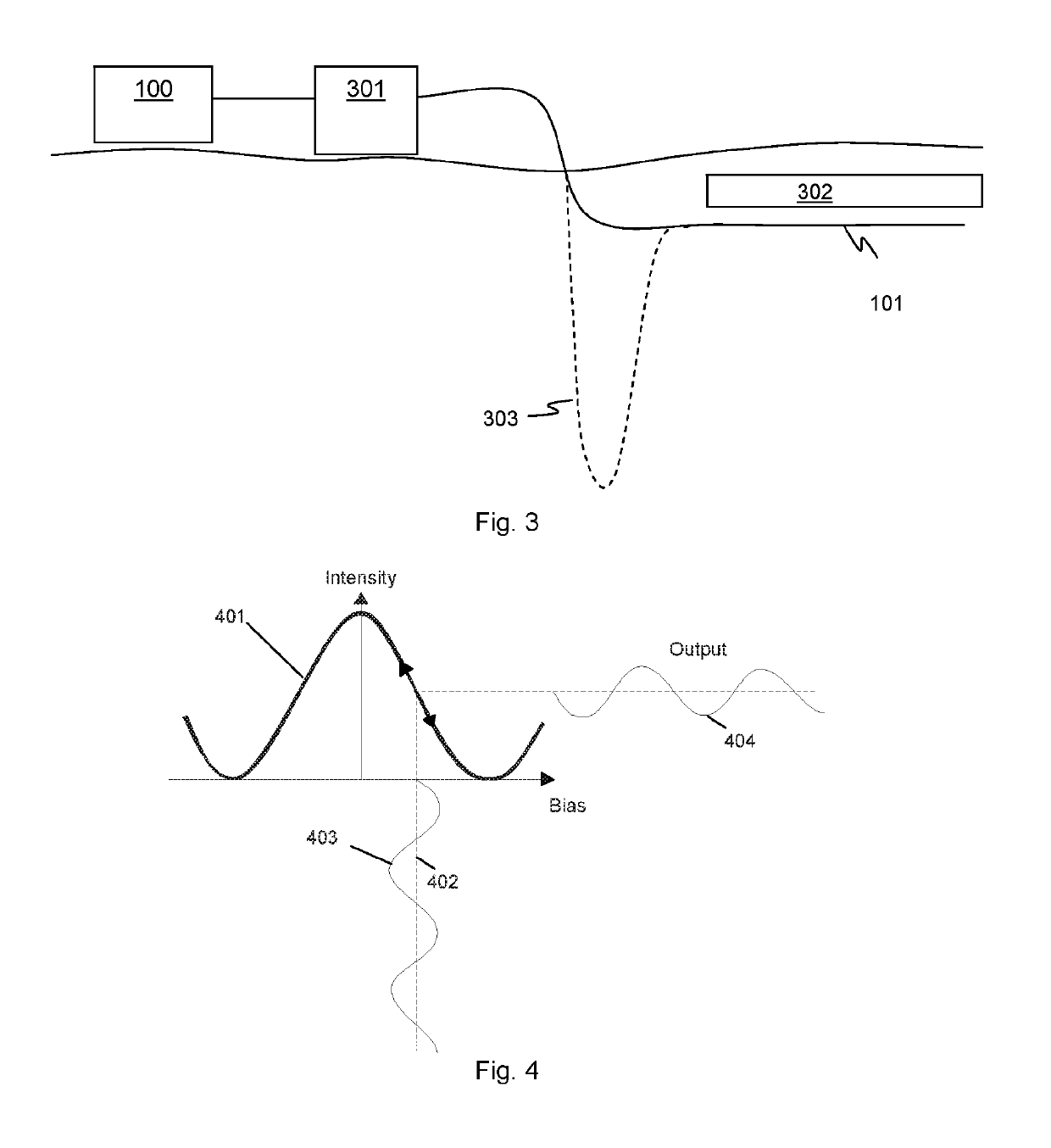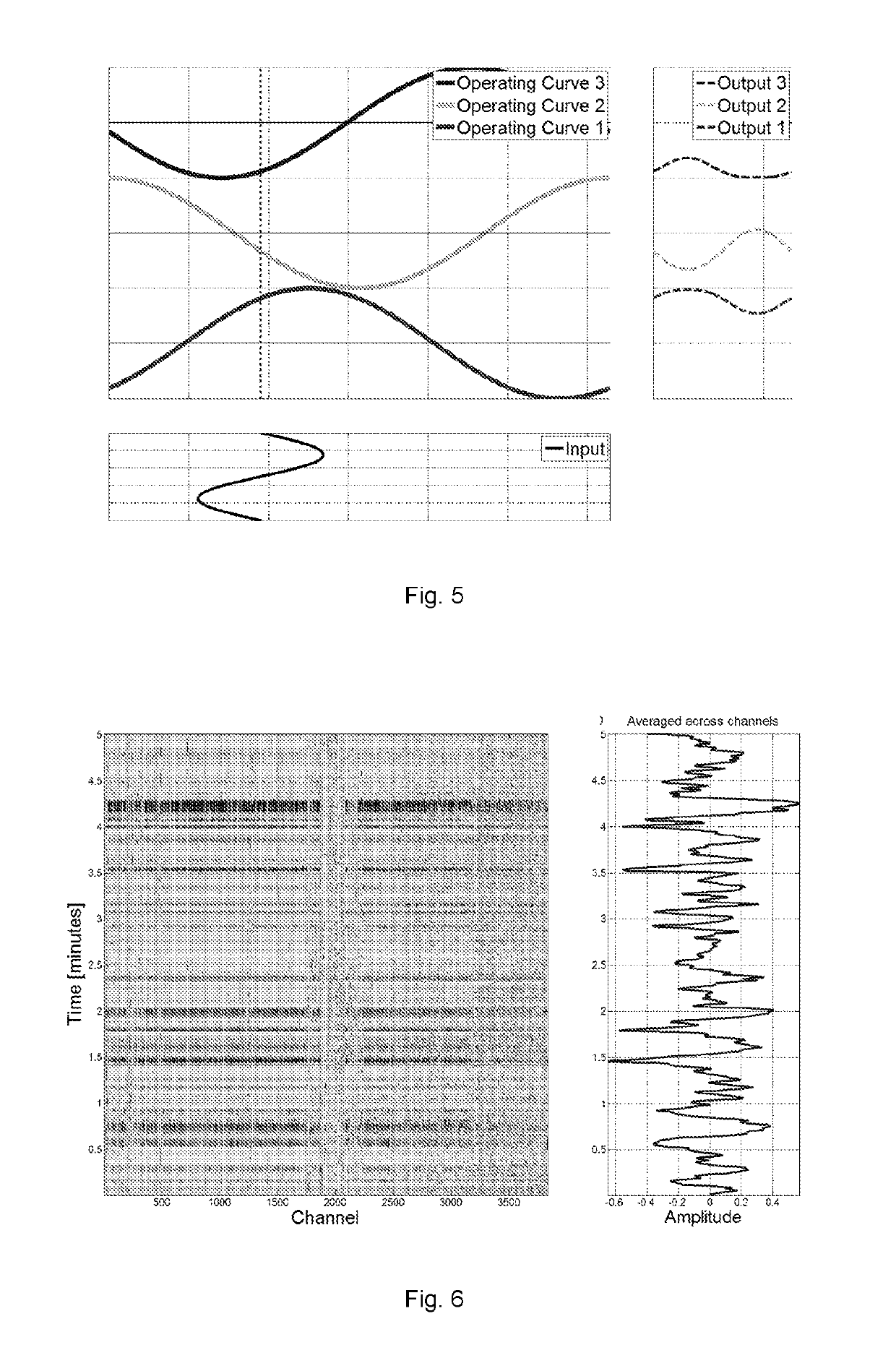Fibre optic distributed sensing
- Summary
- Abstract
- Description
- Claims
- Application Information
AI Technical Summary
Benefits of technology
Problems solved by technology
Method used
Image
Examples
Embodiment Construction
[0049]FIG. 1 shows a schematic of a general distributed fibre optic sensing arrangement. A length of sensing fibre 101 is removably connected at one end to an interrogator 100. The sensing fibre is coupled to an output / input of the interrogator using conventional fibre optic coupling means. The interrogator unit is arranged to launch pulses of coherent optical radiation into the sensing fibre 101 and to detect any radiation from said pulses which is backscattered within the optical fibre. For a Rayleigh scattering based distributed acoustic sensing (DAS) apparatus the detector will detect radiation which has been Rayleigh backscattered from within the fibre and which is thus at the same frequency as the interrogating radiation. To generate the optical pulses the interrogator unit 100 comprises at least one laser 102. The output of the laser may be received by an optical modulator apparatus 103. Note that as used herein the term “optical” is not restricted to the visible spectrum and...
PUM
 Login to View More
Login to View More Abstract
Description
Claims
Application Information
 Login to View More
Login to View More - R&D
- Intellectual Property
- Life Sciences
- Materials
- Tech Scout
- Unparalleled Data Quality
- Higher Quality Content
- 60% Fewer Hallucinations
Browse by: Latest US Patents, China's latest patents, Technical Efficacy Thesaurus, Application Domain, Technology Topic, Popular Technical Reports.
© 2025 PatSnap. All rights reserved.Legal|Privacy policy|Modern Slavery Act Transparency Statement|Sitemap|About US| Contact US: help@patsnap.com



